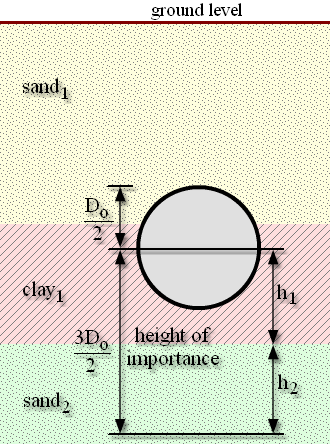Uncertainty factors [UNCER]
Calculation of Uncertainty factors and levels Some of the user specified settings serve as input for the uncertainty values and levels for the different soil mechanical values. There are different uncertainty values specified for each soil mechanical property and for both soil type main categories (sand and clay/peat). The settings used are the Pipeline temperature and the Soil compression. Three uncertainty categories are defined based on these settings:
The different uncertainty values for the soil mechanical properties are: Sandy:
Clayey:
The different uncertainty levels for the soil mechanical properties are the same for sand as for clay:
A low uncertainty level means the averaged value will be divided by the uncertainty factor. A high uncertainty level means the averaged value will be multiplied by the uncertainty factor. The uncertainty values mentioned are used in the weighted average for the sand and clay/peat soil type layers for each soil mechanical value (using the specific soil range of importance for that soil mechanical value). Example: Say the Pipeline temperature is Warm and the Soil compression is Badly packed and we want to calculate the uncertainty value for KLS. For KLS (Downward vertical soil stiffness) the soil range of importance is from pipeline axis to 1.5 diameter below pipeline axis. The uncertainty factor for the sandy layers is 2.0 and 1.6 for the clayey layers. The averaged uncertainty value uw is, for the situation as depicted below:
 The uncertainty level would be low with the current settings. |
Uncertainty_factors_UNCER (last modified: March 26, 2023)
